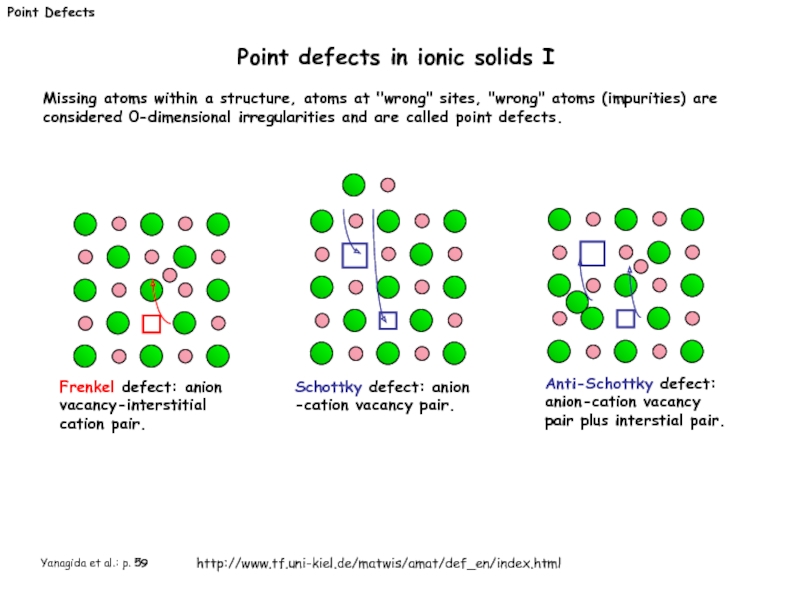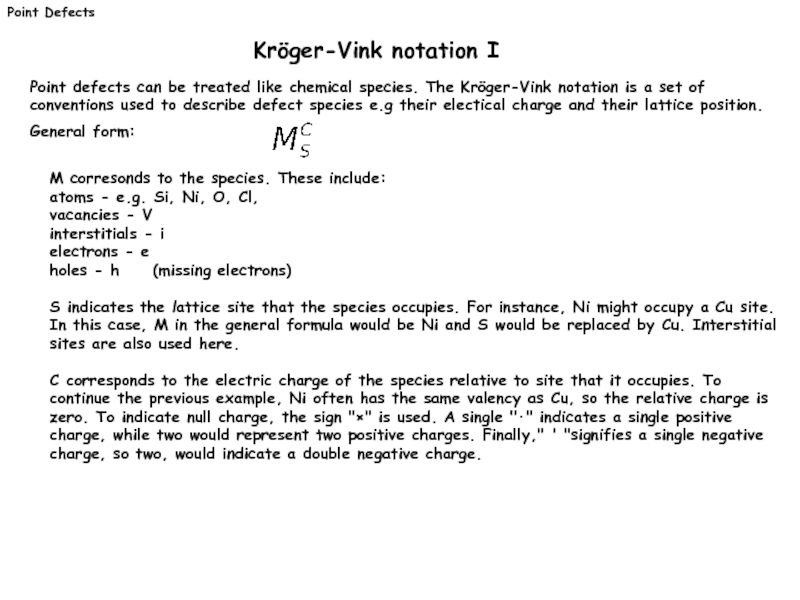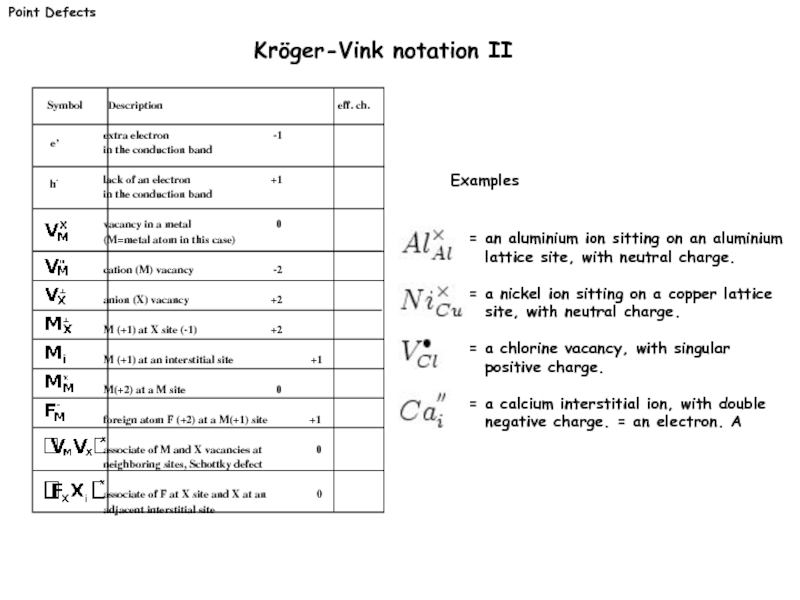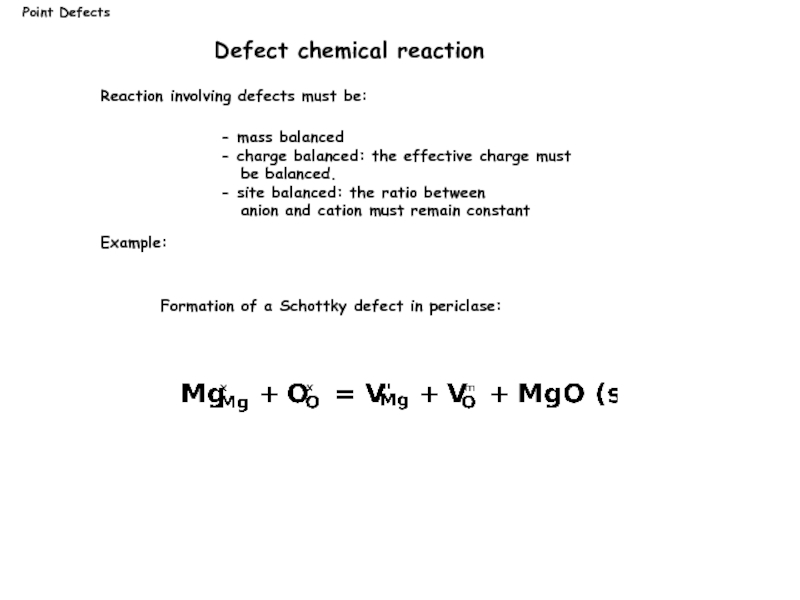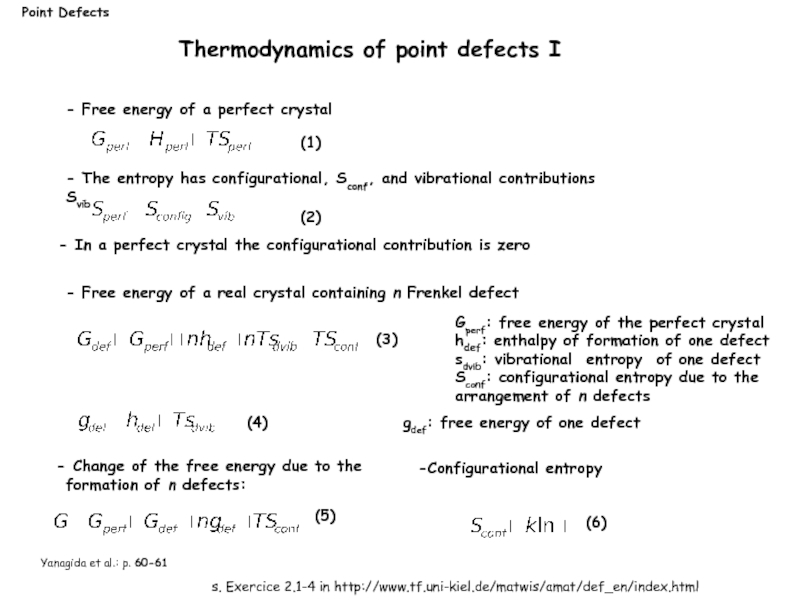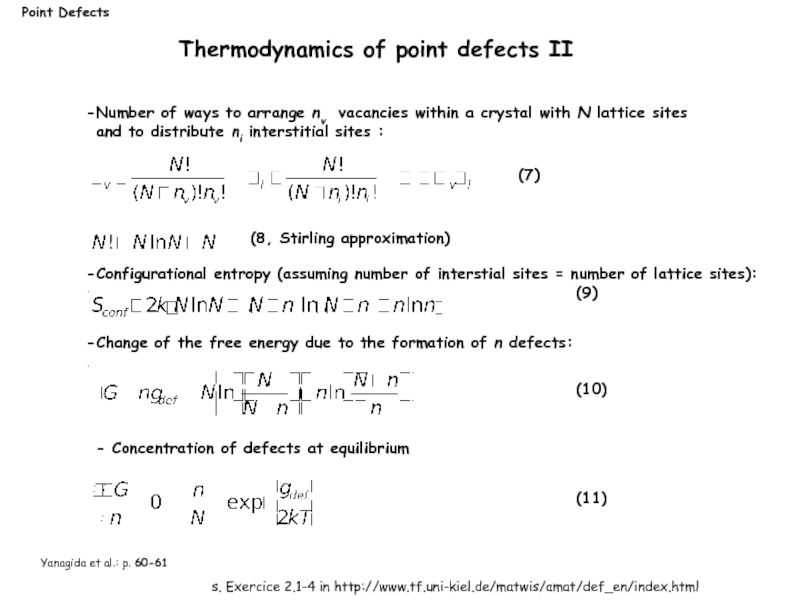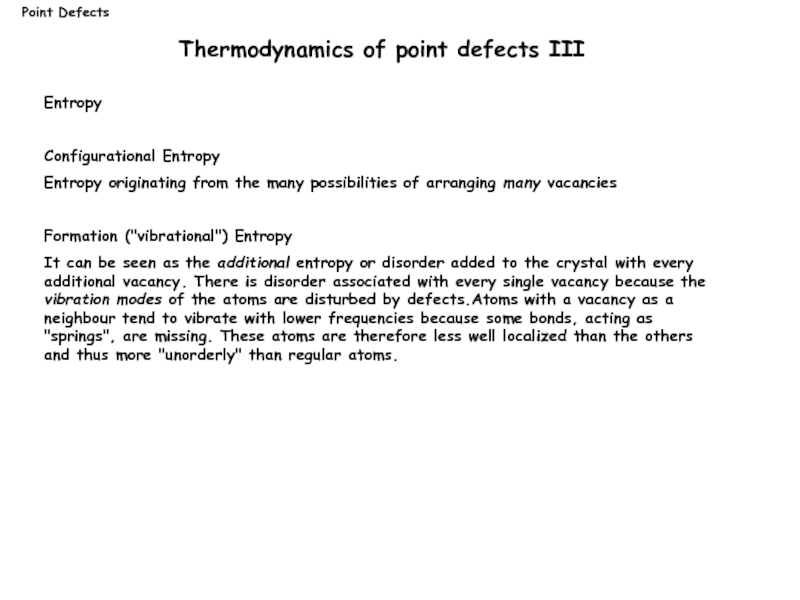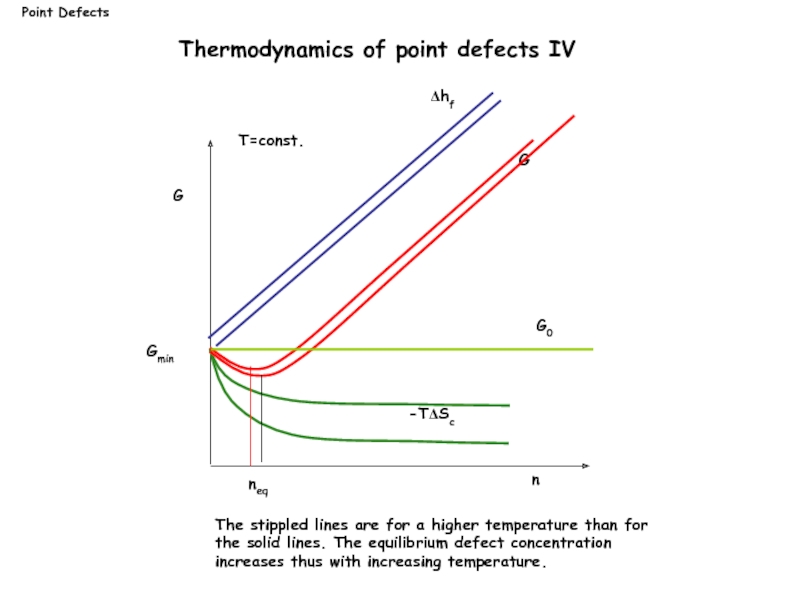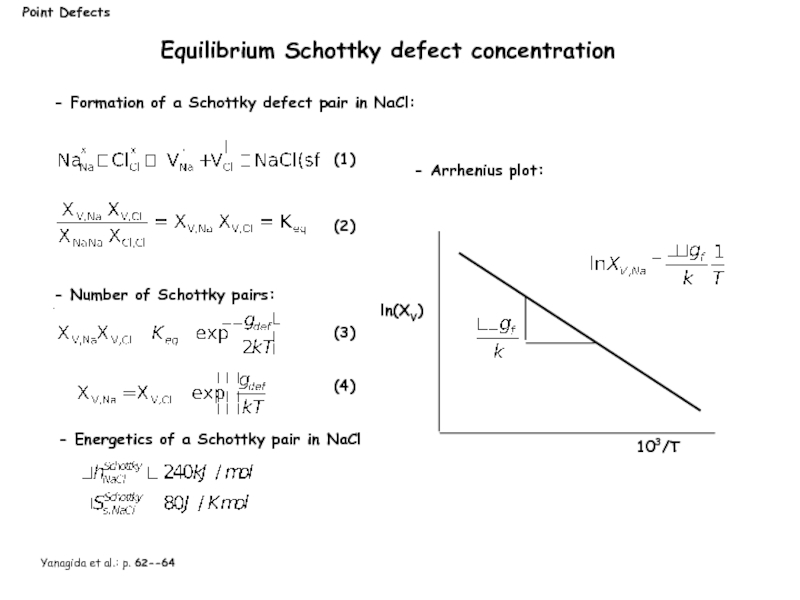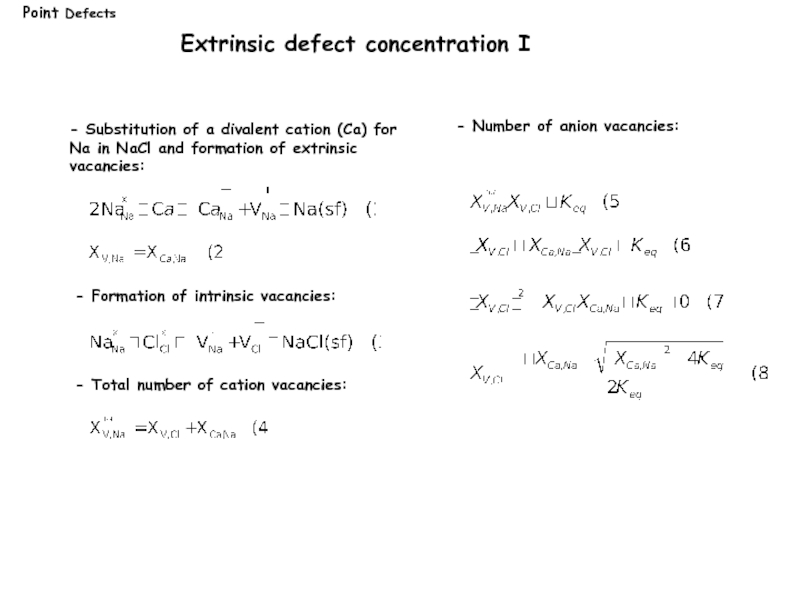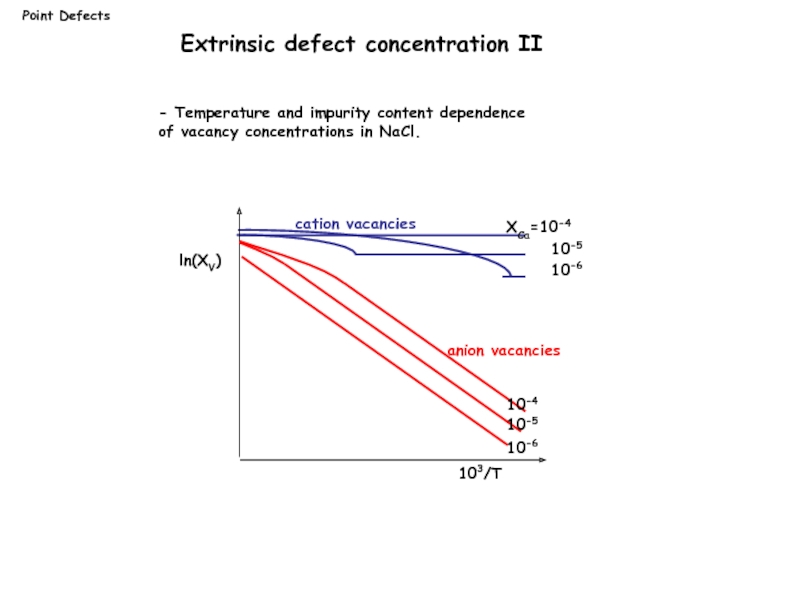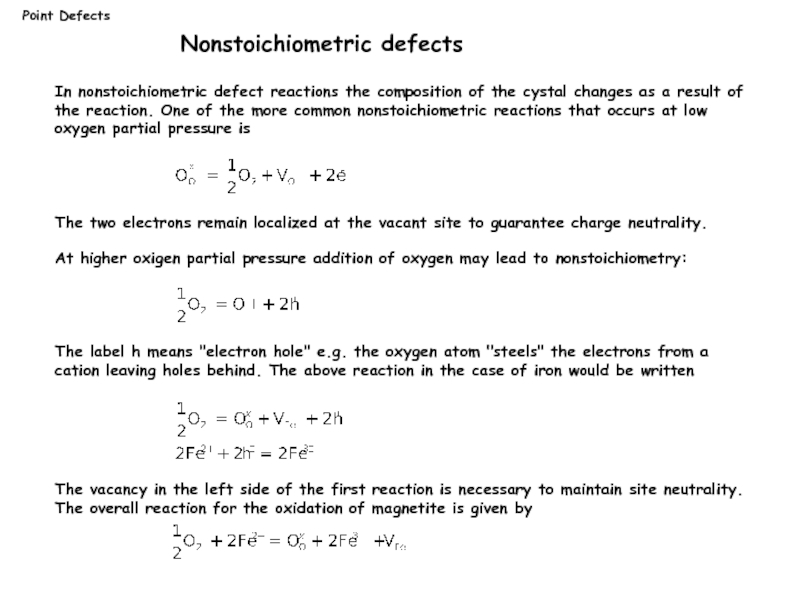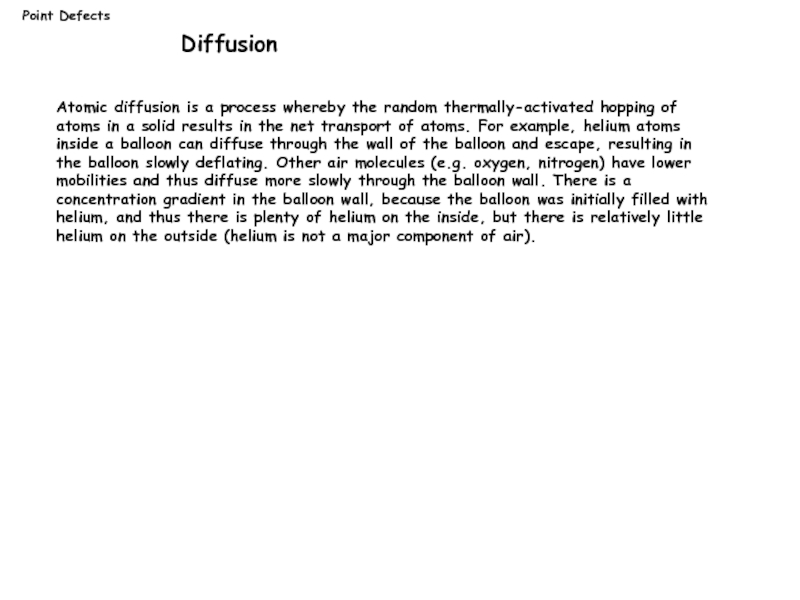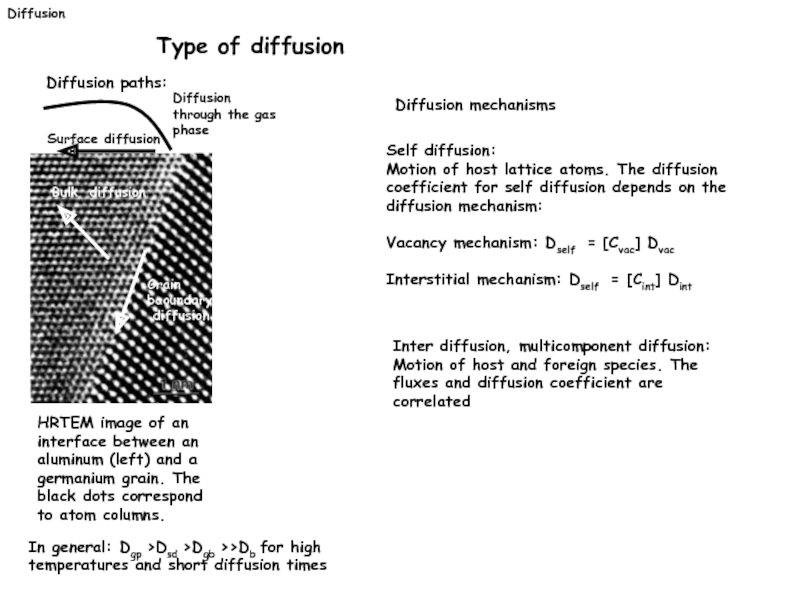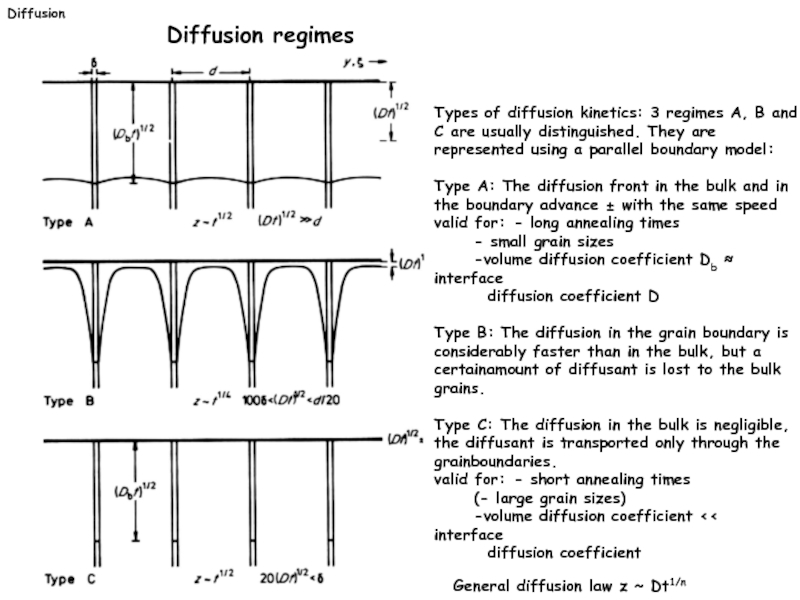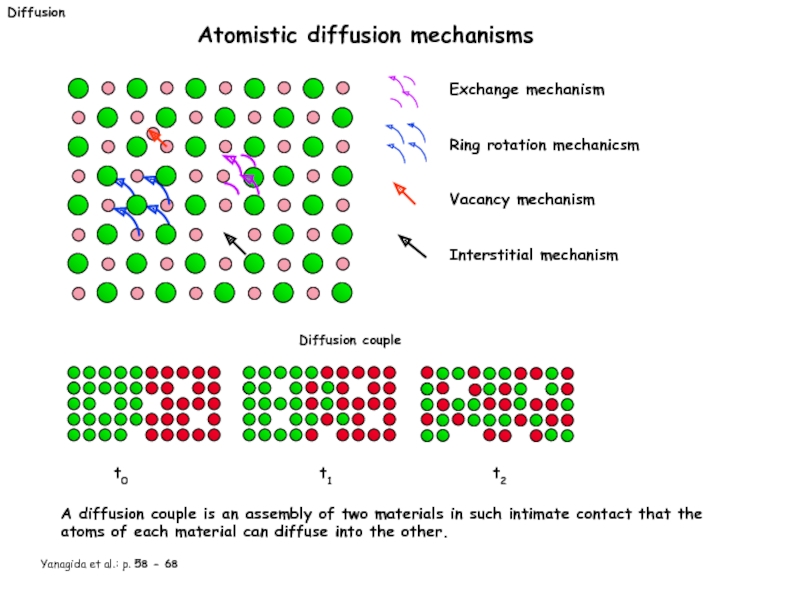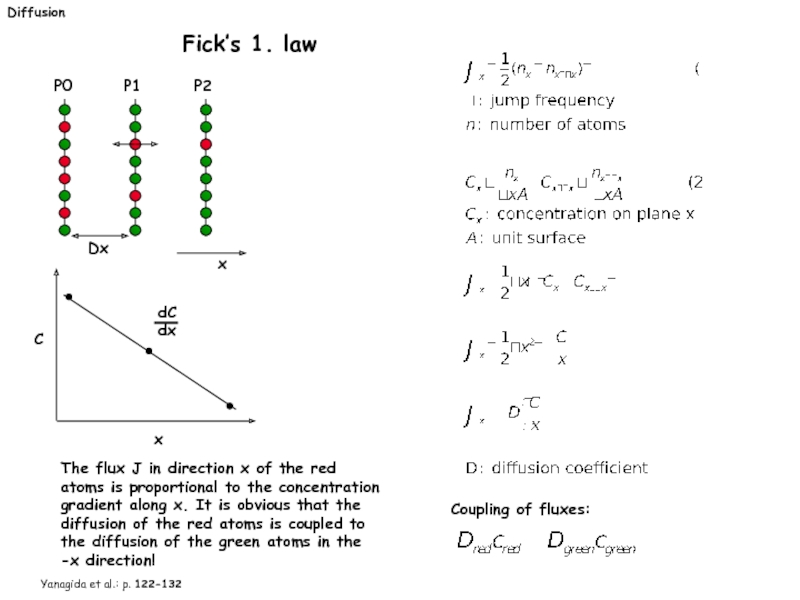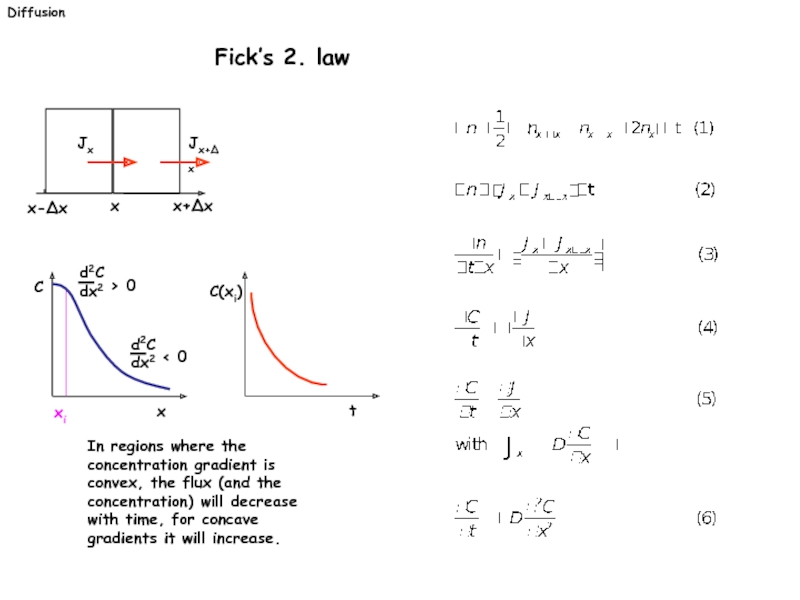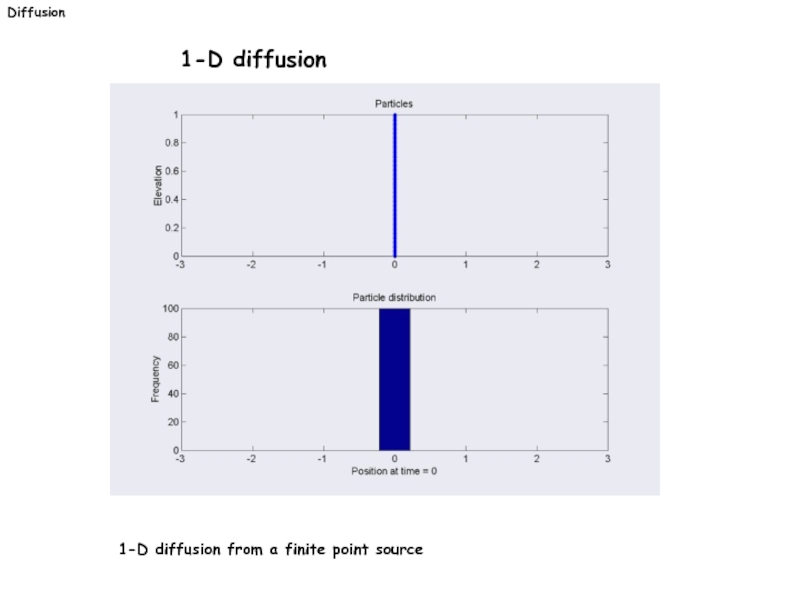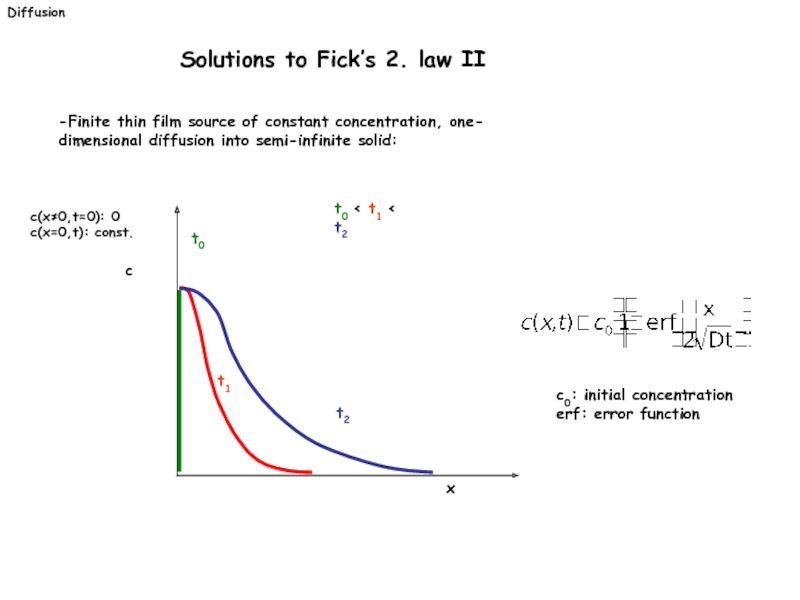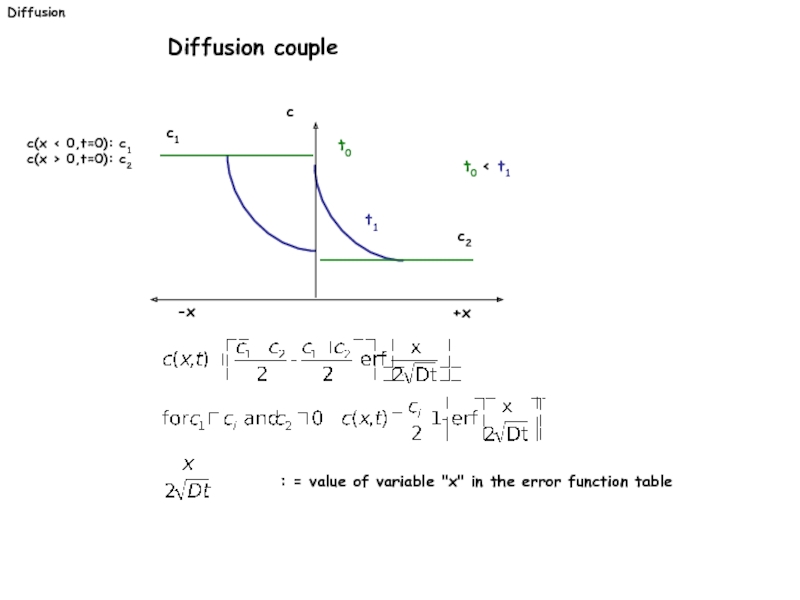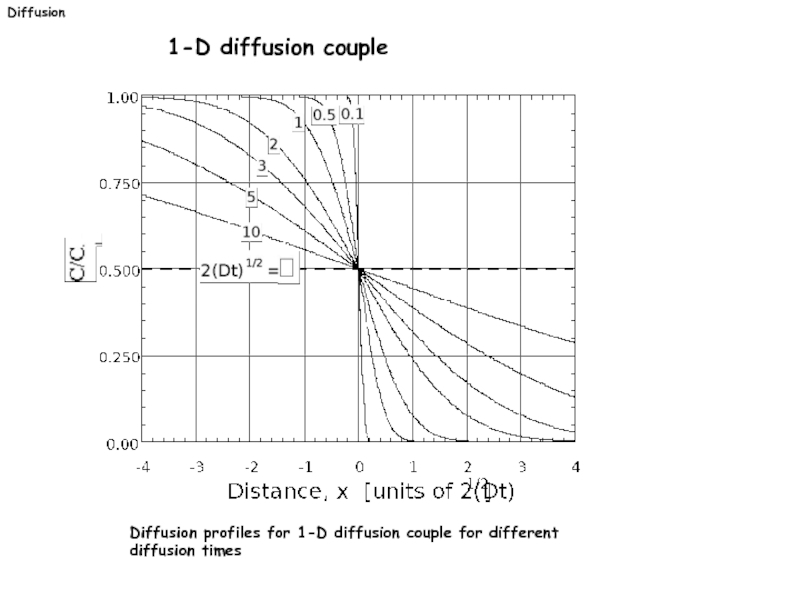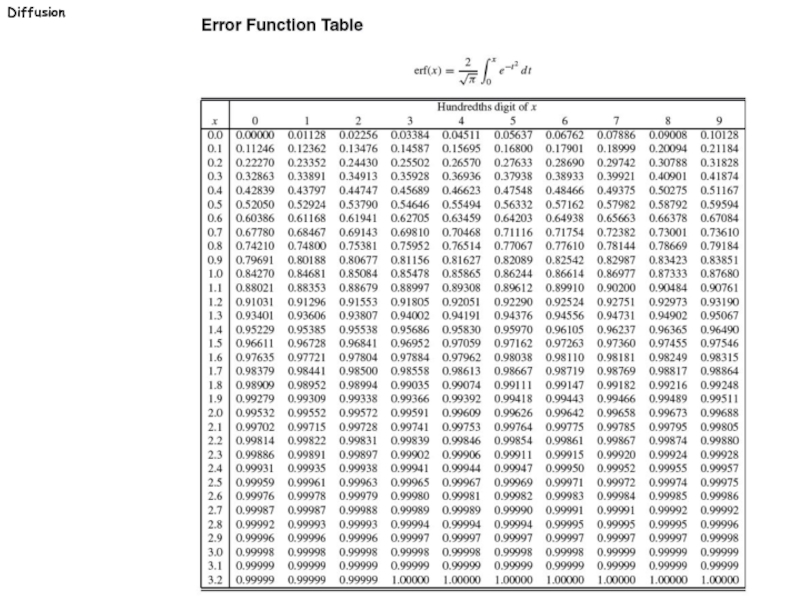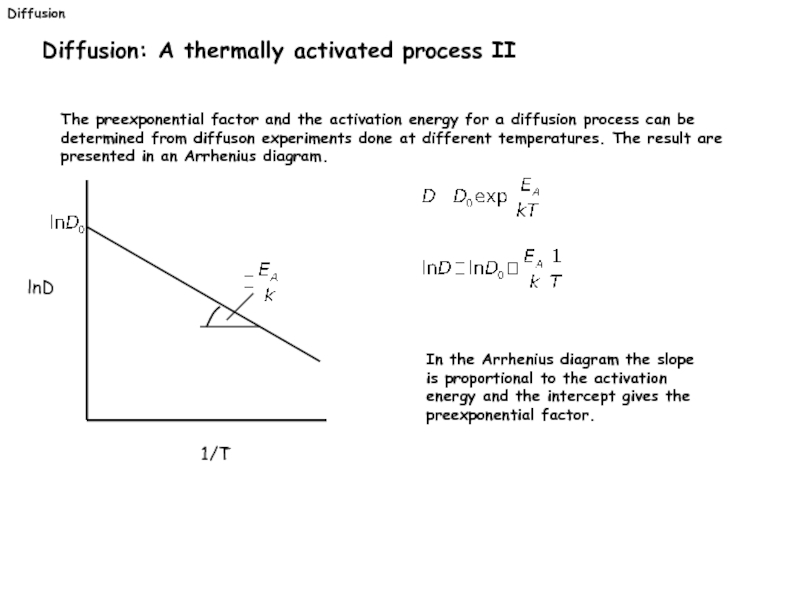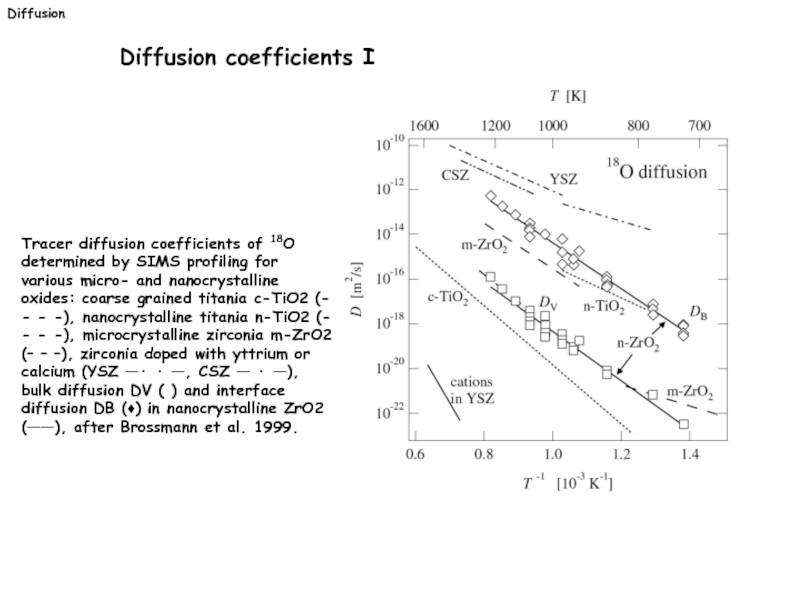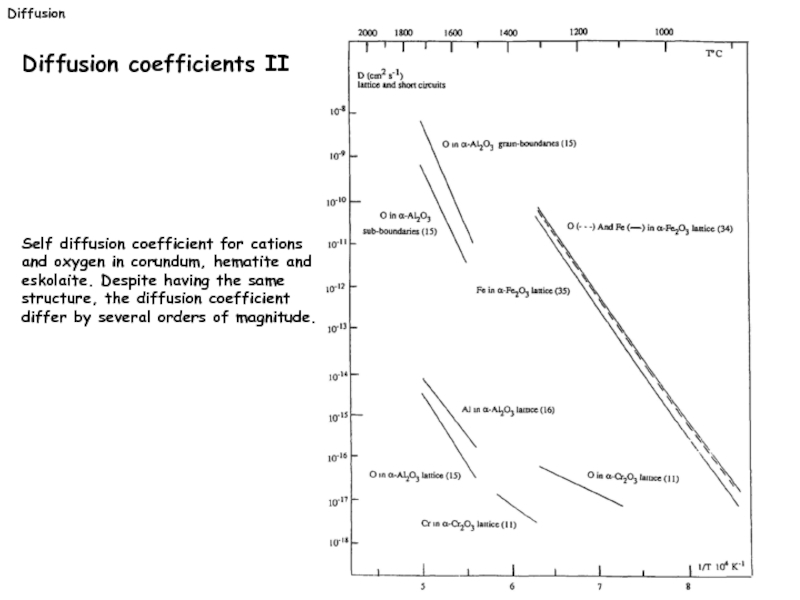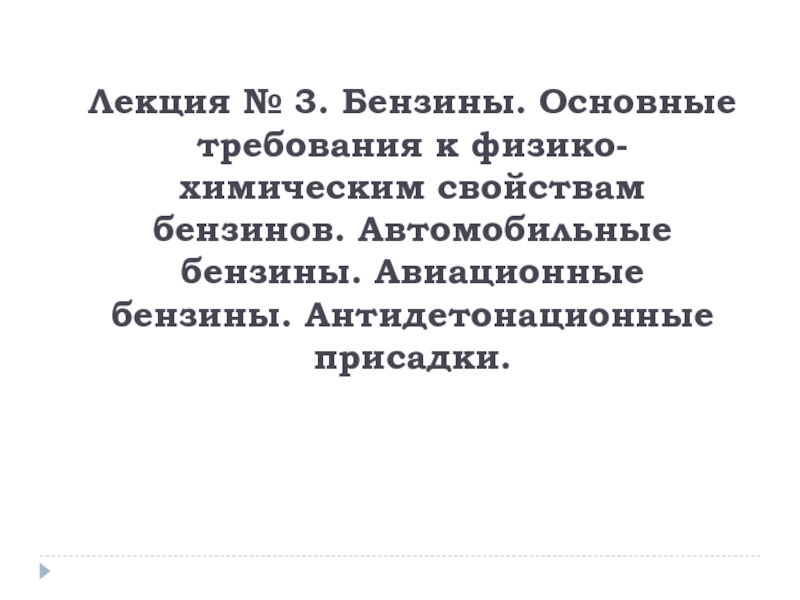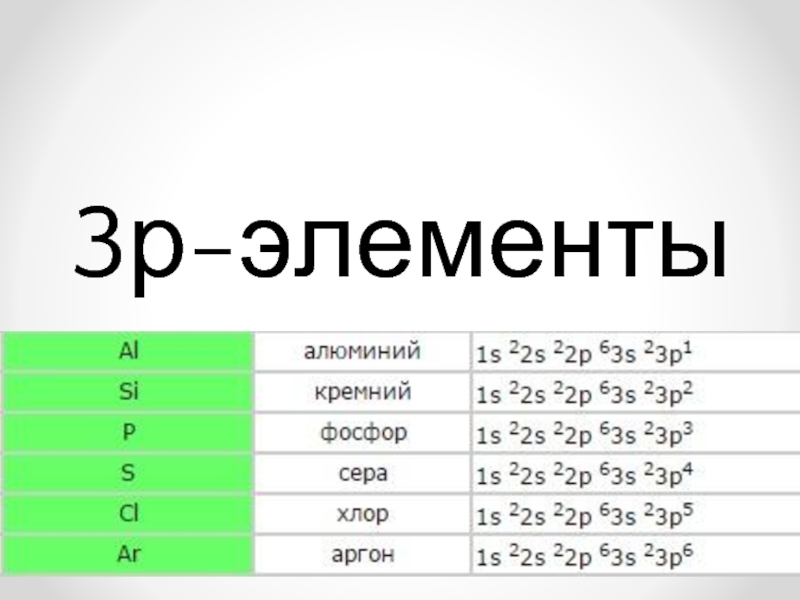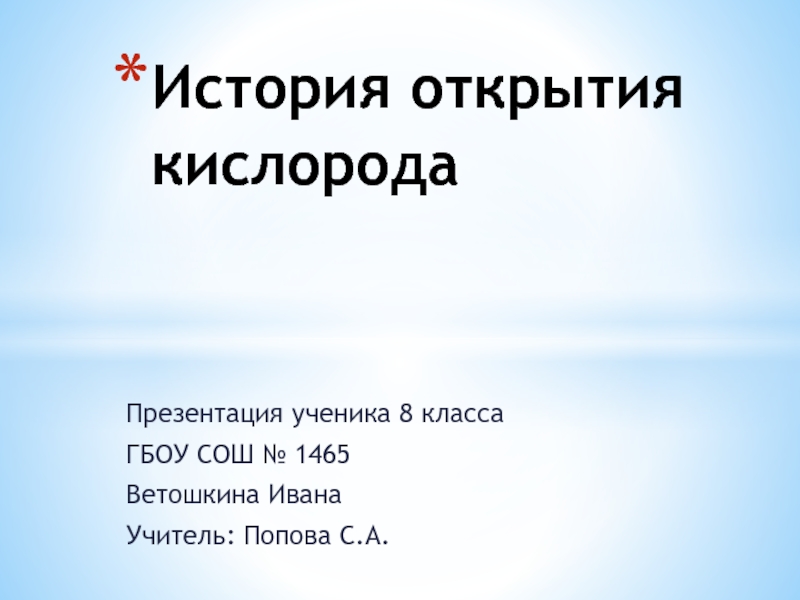- Главная
- Разное
- Дизайн
- Бизнес и предпринимательство
- Аналитика
- Образование
- Развлечения
- Красота и здоровье
- Финансы
- Государство
- Путешествия
- Спорт
- Недвижимость
- Армия
- Графика
- Культурология
- Еда и кулинария
- Лингвистика
- Английский язык
- Астрономия
- Алгебра
- Биология
- География
- Детские презентации
- Информатика
- История
- Литература
- Маркетинг
- Математика
- Медицина
- Менеджмент
- Музыка
- МХК
- Немецкий язык
- ОБЖ
- Обществознание
- Окружающий мир
- Педагогика
- Русский язык
- Технология
- Физика
- Философия
- Химия
- Шаблоны, картинки для презентаций
- Экология
- Экономика
- Юриспруденция
Point defects and diffusion презентация
Содержание
- 1. Point defects and diffusion
- 2. Crystalline solids have a very regular atomic
- 3. Point Defects Point defects
- 5. M corresonds to the species. These include:
- 6. Point Defects Kröger-Vink notation II = an
- 7. Reaction involving defects must be:
- 8. Gperf: free energy of the perfect crystal
- 9. Yanagida et al.: p. 60-61 Number of
- 10. Entropy Configurational Entropy Entropy originating from
- 11. G n G0 Δhf G
- 12. Point Defects Equilibrium Schottky defect concentration
- 13. Extrinsic defect concentration I - Total number
- 14. Point Defects ln(XV) 103/T XCa=10-4
- 15. Point Defects Nonstoichiometric defects In nonstoichiometric
- 16. Atomic diffusion is a process whereby the
- 17. Diffusion Type of diffusion Diffusion paths:
- 18. Types of diffusion kinetics: 3 regimes A,
- 19. Diffusion Atomistic diffusion mechanisms
- 20. Diffusion Fick’s 1.
- 21. Diffusion Fick’s 2.
- 22. Diffusion Solutions to
- 23. Diffusion 1-D diffusion 1-D diffusion from a finite point source
- 24. -Finite thin film source of constant concentration,
- 25. Diffusion Diffusion
- 26. Diffusion 1-D
- 27. Diffusion
- 28. - Distance x’ from a source with
- 29. Diffusion Diffusion: A thermally activated process I
- 30. Diffusion Diffusion: A thermally activated process II
- 31. Tracer diffusion coefficients of 18O determined by
- 32. Diffusion Diffusion coefficients II Self diffusion coefficient
Слайд 2Crystalline solids have a very regular atomic structure: that is, the
- Point defects
Line defects
Planar defects
Bulk defects
Importance of defects: Defects determine many properties of materials (those properties that we call "structure sensitive properties"). Even properties like the specific resistance of semiconductors, conductance in ionic crystals or diffusion properties in general which may appear as intrinsic properties of a material are defect dominated - in case of doubt by the intrinsic defects. Few properties - e.g. the melting point or the elastic modulus - are not, or only weakly influenced by defects.
Point Defects
Crystal defects
Слайд 3Point Defects
Point defects in ionic solids I
Frenkel defect:
Schottky defect: anion -cation vacancy pair.
Anti-Schottky defect: anion-cation vacancy pair plus interstial pair.
Yanagida et al.: p. 59
http://www.tf.uni-kiel.de/matwis/amat/def_en/index.html
Missing atoms within a structure, atoms at "wrong" sites, "wrong" atoms (impurities) are considered 0-dimensional irregularities and are called point defects.
Слайд 4
F-center: anion vacancy with excess electron replacing the missing anion
e-
M-center:
e-
e-
Isovalent substitute atom
Point Defects
Point defects in ionic solids II
Слайд 5M corresonds to the species. These include:
atoms - e.g. Si, Ni,
vacancies - V
interstitials - i
electrons - e
holes - h (missing electrons)
S indicates the lattice site that the species occupies. For instance, Ni might occupy a Cu site. In this case, M in the general formula would be Ni and S would be replaced by Cu. Interstitial sites are also used here.
C corresponds to the electric charge of the species relative to site that it occupies. To continue the previous example, Ni often has the same valency as Cu, so the relative charge is zero. To indicate null charge, the sign "×" is used. A single "∙" indicates a single positive charge, while two would represent two positive charges. Finally," ' "signifies a single negative charge, so two, would indicate a double negative charge.
Point Defects
Kröger-Vink notation I
Point defects can be treated like chemical species. The Kröger-Vink notation is a set of conventions used to describe defect species e.g their electical charge and their lattice position.
General form:
Слайд 6Point Defects
Kröger-Vink notation II
= an aluminium ion sitting on an aluminium
= a nickel ion sitting on a copper lattice site, with neutral charge.
= a chlorine vacancy, with singular positive charge.
= a calcium interstitial ion, with double negative charge. = an electron. A
Examples
Слайд 7Reaction involving defects must be:
Example:
Point Defects
Defect chemical reaction
Formation of a
- mass balanced
- charge balanced: the effective charge must
be balanced.
- site balanced: the ratio between
anion and cation must remain constant
Слайд 8Gperf: free energy of the perfect crystal
hdef: enthalpy of formation
sdvib: vibrational entropy of one defect
Sconf: configurational entropy due to the arrangement of n defects
Thermodynamics of point defects I
Point Defects
Yanagida et al.: p. 60-61
- Free energy of a real crystal containing n Frenkel defect
gdef: free energy of one defect
Change of the free energy due to the formation of n defects:
Configurational entropy
(1)
(2)
(3)
(4)
s. Exercice 2.1-4 in http://www.tf.uni-kiel.de/matwis/amat/def_en/index.html
- Free energy of a perfect crystal
- In a perfect crystal the configurational contribution is zero
- The entropy has configurational, Sconf, and vibrational contributions Svib
(5)
(6)
Слайд 9Yanagida et al.: p. 60-61
Number of ways to arrange nv vacancies
s. Exercice 2.1-4 in http://www.tf.uni-kiel.de/matwis/amat/def_en/index.html
(7)
(8, Stirling approximation)
Configurational entropy (assuming number of interstial sites = number of lattice sites):
Change of the free energy due to the formation of n defects:
- Concentration of defects at equilibrium
(9)
(10)
(11)
Thermodynamics of point defects II
Point Defects
Слайд 10Entropy
Configurational Entropy
Entropy originating from the many possibilities of arranging many vacancies
Formation
It can be seen as the additional entropy or disorder added to the crystal with every additional vacancy. There is disorder associated with every single vacancy because the vibration modes of the atoms are disturbed by defects.Atoms with a vacancy as a neighbour tend to vibrate with lower frequencies because some bonds, acting as "springs", are missing. These atoms are therefore less well localized than the others and thus more "unorderly" than regular atoms.
Thermodynamics of point defects III
Point Defects
Слайд 11
G
n
G0
Δhf
G
neq
-TΔSc
Gmin
T=const.
The stippled lines are for a higher temperature than for the
Thermodynamics of point defects IV
Point Defects
Слайд 12Point Defects
Equilibrium Schottky defect concentration
- Number of Schottky pairs:
- Formation
- Arrhenius plot:
ln(XV)
103/T
Yanagida et al.: p. 62--64
- Energetics of a Schottky pair in NaCl
(1)
(2)
(3)
(4)
Слайд 13Extrinsic defect concentration I
- Total number of cation vacancies:
- Substitution of
Na in NaCl and formation of extrinsic
vacancies:
- Formation of intrinsic vacancies:
Point Defects
- Number of anion vacancies:
Слайд 14Point Defects
ln(XV)
103/T
XCa=10-4
10-5
10-6
10-4
10-5
10-6
cation vacancies
anion vacancies
- Temperature and impurity content dependence
of vacancy
Extrinsic defect concentration II
Слайд 15Point Defects
Nonstoichiometric defects
In nonstoichiometric defect reactions the composition of the
The two electrons remain localized at the vacant site to guarantee charge neutrality.
At higher oxigen partial pressure addition of oxygen may lead to nonstoichiometry:
The label h means "electron hole" e.g. the oxygen atom "steels" the electrons from a cation leaving holes behind. The above reaction in the case of iron would be written
The vacancy in the left side of the first reaction is necessary to maintain site neutrality. The overall reaction for the oxidation of magnetite is given by
Слайд 16Atomic diffusion is a process whereby the random thermally-activated hopping of
Point Defects
Diffusion
Слайд 17Diffusion
Type of diffusion
Diffusion paths:
HRTEM image of an interface between an
Surface diffusion
Bulk diffusion
Grain
baoundary
diffusion
Diffusion mechanisms
In general: Dgp >Dsd >Dgb >>Db for high
temperatures and short diffusion times
Diffusion through the gas phase
Self diffusion:
Motion of host lattice atoms. The diffusion coefficient for self diffusion depends on the diffusion mechanism:
Vacancy mechanism: Dself = [Cvac] Dvac
Interstitial mechanism: Dself = [Cint] Dint
Inter diffusion, multicomponent diffusion:
Motion of host and foreign species. The fluxes and diffusion coefficient are correlated
Слайд 18Types of diffusion kinetics: 3 regimes A, B and C are
Type A: The diffusion front in the bulk and in the boundary advance ± with the same speed
valid for: - long annealing times
- small grain sizes
-volume diffusion coefficient Db ≈ interface
diffusion coefficient D
Type B: The diffusion in the grain boundary is
considerably faster than in the bulk, but a certainamount of diffusant is lost to the bulk grains.
Type C: The diffusion in the bulk is negligible,
the diffusant is transported only through the grainboundaries.
valid for: - short annealing times
(- large grain sizes)
-volume diffusion coefficient << interface
diffusion coefficient
General diffusion law z ~ Dt1/n
Diffusion
Diffusion regimes
Слайд 19Diffusion
Atomistic diffusion mechanisms
Exchange mechanism
Ring rotation mechanicsm
Vacancy mechanism
Interstitial mechanism
Diffusion
t0
Yanagida et al.: p. 58 - 68
t1
t2
A diffusion couple is an assembly of two materials in such intimate contact that the atoms of each material can diffuse into the other.
Слайд 20Diffusion
Fick’s 1. law
dC
dx
C
x
The flux J in direction x
Yanagida et al.: p. 122-132
Coupling of fluxes:
Слайд 21Diffusion
Fick’s 2. law
In regions where the
x
x+∆x
Jx
Jx+∆x
x-∆x
x
C(xi)
t
C
xi
Слайд 22Diffusion
Solutions to Fick’s 2. law I
-Finite thin
semi-infinite solid:
c(x≠0,t=0): 0
s: initial amount of diffusive
species.
x
c
t1
t2
t0 < t1 < t2
t0
Слайд 24-Finite thin film source of constant concentration, one-
dimensional diffusion into semi-infinite
c(x≠0,t=0): 0
c(x=0,t): const.
x
c
t1
t2
t0 < t1 < t2
t0
c0: initial concentration
erf: error function
Diffusion
Solutions to Fick’s 2. law II
Слайд 25Diffusion
Diffusion couple
c(x < 0,t=0): c1
c(x > 0,t=0):
+x
-x
c
t1
t0 < t1
t0
c1
c2
: = value of variable "x" in the error function table
Слайд 26Diffusion
1-D diffusion couple
Diffusion profiles for 1-D diffusion
Слайд 28- Distance x’ from a source with finite concentration where a
solving for x’:
10-3co
x
c
co
x’
Diffusion
Diffusion front
Diffusion profile after time t:
Material that diffused beyond the point x'
at which the concentration is 10-3 c0 :
Слайд 29Diffusion
Diffusion: A thermally activated process I
Energy of red atom= ER
Minimum energy
Probability that an atom has an energy >EA:
Diffusion coefficient
D0: Preexponential factor, a constant which is a function of jump frequency, jump distance and coordination number of vacancies
Number
of atoms
Energy
EA
ER
Boltzmann distribution
T2
T1
T1 < T2
Слайд 30Diffusion
Diffusion: A thermally activated process II
The preexponential factor and the activation
lnD
1/T
In the Arrhenius diagram the slope is proportional to the activation energy and the intercept gives the preexponential factor.
Слайд 31Tracer diffusion coefficients of 18O determined by SIMS profiling for various
Diffusion
Diffusion coefficients I


